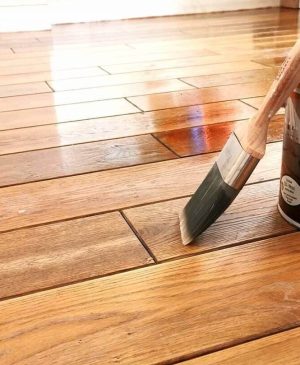Home improvement is a rewarding way to elevate the aesthetics and functionality of your living space. Whether you’re aiming to enhance your home’s value or simply make it more comfortable, DIY projects offer an accessible, cost-effective route to achieving your goals. While some home improvement projects require professional assistance, many tasks can be handled with a little patience, creativity, and elbow grease. The following top 10 DIY tips will help you navigate your home improvement endeavors, ensuring that you get the best results without breaking the bank.
1. Start with a Clear Plan
Before diving into any project, having a solid plan in place is crucial. A clear vision of what you want to accomplish will not only keep you organized but also help you avoid unnecessary mistakes or expenses. Begin by listing your goals for the project, outlining the materials you’ll need, and establishing a realistic timeline. Whether you’re updating a single room or remodeling your entire home, careful planning ensures that your efforts are directed and focused, and that the outcome will align with your expectations.
Tip: Use design software or simple sketching to visualize your ideas. This will help you make informed decisions about color schemes, layout, and overall style.
2. Set a Realistic Budget
One of the biggest challenges in DIY home improvement projects is managing costs. It’s easy to get carried away with the excitement of transformation, but staying within your budget is essential. To avoid overspending, break down the cost of materials, tools, and labor (if you’re hiring any help) into categories. Don’t forget to set aside a contingency fund for unforeseen expenses—after all, it’s common for surprises to arise during home improvement projects.
Tip: Research and compare prices for materials to find the best deals, and consider repurposing or upcycling items where possible to keep costs down.
3. Master Basic Tools and Skills
Many home improvement projects require a few essential tools, and it’s important to become comfortable with using them. Basic tools such as a hammer, screwdrivers, tape measure, power drill, and level will serve you well in nearly every DIY endeavor. Once you have your tools, take time to practice using them correctly. Having a good understanding of your tools will not only make your projects easier but will also ensure that your work is done with precision.
Tip: Watch instructional videos or attend workshops to build your skills and confidence before tackling bigger projects. Most home improvement stores offer free classes to teach you the basics.
4. Embrace Paint for Instant Transformation
Few things can transform a space as quickly and affordably as a fresh coat of paint. Whether you’re repainting an entire room or just updating trim and accents, painting is a simple DIY task that can make a world of difference. Choose colors that complement your existing décor or go bold with an accent wall to create a striking focal point.
Tip: Invest in high-quality brushes and rollers for smoother, more even application. For best results, prep your surfaces properly by cleaning and priming before applying paint.
5. Focus on Curb Appeal
The exterior of your home plays a significant role in its overall appeal and value. Improving curb appeal doesn’t always mean extensive renovations; simple improvements like a new front door, fresh landscaping, or updated house numbers can give your home an inviting look. Start with small changes like adding potted plants or cleaning gutters, and then work your way up to larger projects such as painting the exterior or upgrading the driveway.
Tip: Consider adding outdoor lighting, such as path lights or sconces, to create a welcoming atmosphere at night.
6. Upgrade Lighting Fixtures
Lighting plays a pivotal role in setting the mood and functionality of any room. Outdated or poorly placed light fixtures can make a space feel dull and unattractive. Updating light fixtures is a simple DIY task that can instantly modernize your home. Choose fixtures that complement your room’s style—whether it’s a statement chandelier for the dining room or sleek recessed lighting for the kitchen.
Tip: Install dimmer switches to add versatility to your lighting. This allows you to adjust the brightness based on the time of day and the mood you wish to create.
7. Install New Hardware and Fixtures
Small changes, such as replacing cabinet handles, door knobs, and faucets, can have a big impact on the overall appearance of a room. These inexpensive updates can give your kitchen, bathroom, or bedroom a fresh look without the need for a full renovation. Choose hardware that matches the overall aesthetic of your space, whether you prefer modern, rustic, or vintage styles.
Tip: When replacing hardware, make sure to measure the existing holes to ensure the new hardware fits without the need for additional drilling.
8. Optimize Storage Space
Clutter can quickly accumulate in any home, but smart storage solutions can help you stay organized and make the most of your space. Consider adding shelves, baskets, or built-in cabinets to maximize vertical storage. In kitchens and bathrooms, cabinet organizers or pull-out shelves can improve functionality and accessibility. You don’t need to hire a contractor to increase storage; with a few simple adjustments, you can significantly reduce clutter.
Tip: Repurpose unused or underutilized spaces, such as the area above the refrigerator or under the stairs, to create more storage without sacrificing square footage.
9. Enhance Your Floors
Upgrading or refinishing your floors is one of the most impactful improvements you can make. Whether you’re installing hardwood, laminate, tile, or vinyl flooring, the right floor can completely change the look of a room. If replacing floors isn’t within your budget, consider refinishing existing hardwood floors or using peel-and-stick vinyl tiles for a quick and affordable update.
Tip: If you’re tackling a floor installation yourself, make sure to follow the manufacturer’s instructions carefully and invest in a good underlayment for added comfort and durability.
10. Repurpose and Reuse
Sustainability is not only good for the environment, but it’s also an excellent way to save money on home improvement projects. Repurposing and reusing materials is a creative way to breathe new life into old furniture or decor. Consider transforming an old wooden ladder into a bookshelf, turning vintage doors into a headboard, or converting wooden pallets into a coffee table. By repurposing what you already own, you can create unique and personalized pieces that add character to your home.
Tip: Scour local thrift stores, flea markets, or garage sales for furniture and materials you can upcycle into something new and stylish.
Final Thoughts
DIY home improvement projects offer a satisfying way to personalize and enhance your living space while keeping costs in check. Whether you’re a seasoned pro or a first-time renovator, the key to success is preparation, patience, and persistence. By following these top 10 DIY tips, you can tackle a variety of projects with confidence, creating a home that reflects your unique style and vision. And remember, the most important thing is to enjoy the process—after all, every brushstroke, nail, and piece of furniture you transform is an investment in your home and your personal creativity. Happy renovating!


















